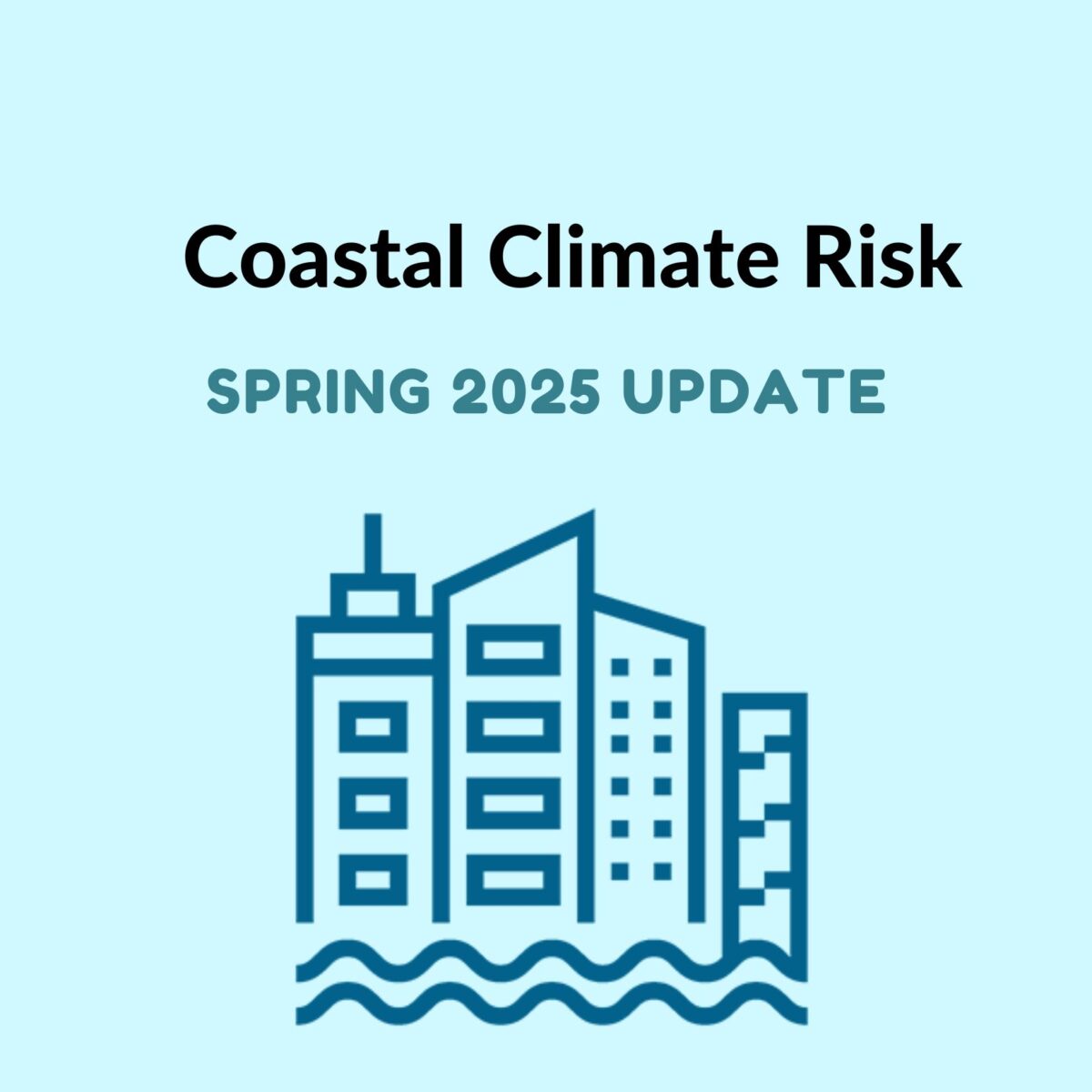
Research Updates: Since the last news update, the Coastal Climate Risk focus area, representing 16 sub-projects, has continued to make progress, and collectively, seven new articles have been published since the last news update in October 2024. Additionally, a few projects under this focus area are working on creating online tools to make their research accessible. Brief sub-project level updates are provided below:
-
- Regional-Scale Tropical and Extratropical Cyclone Flood Modeling: Quantified tropical cyclone storm surge flood hazards along the northeast U.S. coastline under future climate scenarios. Manuscript submitted.
- Berm Dune Monitoring: Developed machine learning models for classifying vegetation in dune systems, including a new version incorporating LiDAR data to classify invasive species.
- Geo-Economics Of Beach Nourishment And Alongshore Connectivity: Analyzed beach nourishment impacts on sediment transport and coastal economics, preliminary findings suggest that transfers of nourishment benefits may flow from less wealthy to wealthier communities. Continued field research to understand economic influences on nourishment decisions.
- Probabilistic Local (Street-Level) Flood Hazard Analysis: Completed flood hazard assessment for Gloucester City, NJ, with results of the simulations prepared in a user-friendly and standardized format to be publicly shared in a repository.
- Statistical Analysis of Inundation Model Boundary Conditions: Collaborated with Dr. Franco Montalto’s team to generate boundary conditions for flood modeling. Contributed to the revision and successful publication of the paper, “A Multivariate Statistical Framework for Mixed Storm Types in Compound Flood Analysis.” Another paper is in progress.
- Extratropical Cyclone Modeling: Completed a study surveying the impact of extratropical cyclones and tropical cyclones on storm tide water levels and property damage using tide gauge data.
- Local Building Stock Physical Damages: Developed methods to reduce uncertainties in building elevation and depth damage functions (using National Flood Insurance Program claim data). Created metrics to determine community flood vulnerabilities and AI models for realistic flood visualization.
- Building Exposure Mapping in Gloucester City/Philadelphia: Input flood scenarios for Gloucester City into an online dashboard. Also worked on expanding building vulnerability definitions, which led to the paper “An Integrated Metric for Rapid and Equitable Emergency Rescue During Extreme Floods in Urban Environments”.
- Tropical Cyclone Modeling: Submitted manuscripts on bias correction and tropical cyclone-heatwave interactions in urban environments. Continuing to work on assessing tropical cyclone design wind speeds under climate change. Preliminary findings show significant sensitivity in future climate scenarios.
- Modeling Barrier-Backbarrier Dynamics And Coastal Adaptation: Extended geomorphic models for coastal engineering practices and initiated discussions to push this tool towards its intended goal: to be a decision analysis tool that allows shorefront managers and back-barrier managers to optimally coordinate decisions.
- Humid Heat Stress Extremes: Developed methodology to project daily humid heat and engaged with Philadelphia’s Office of Sustainability to determine how this information could be useful. Continued to analyze the relationship between humid heat on land and offshore water temperatures.
- Sea-Level Rise Variability In The Mach Region: Gathered VLM information from sources not considered in current IPCC AR6 sea-level projections to better characterize rates and associated uncertainties, with the aim of producing more robust VLM estimates in future projections. The VLM findings are in preparation for a manuscript aimed to be submitted by summer 2025.
- Effect of Bathymetric Changes on Water-Level Variation In Estuaries: Studied impacts of bathymetric changes in the Delaware Estuary to understand their influence on water levels and flood hazards. Identified key patterns of sediment erosion and deposition driven by sea-level variations through lab experiments. Also began hydrodynamic modeling efforts using Delft3D.
- Past Morphological Change In The Delaware Estuary: Analyzed historical maps and created a geodatabase to quantify changes over time in the width of the Delaware River in relation to the increasing tidal range. A spatial data analysis was also conducted to identify areas of erosion and deposition along the river.
- Power System Modeling: Developed a power grid failure model using historical outage data and hazard simulations to create probabilistic fragility functions. This model supported a high-resolution power outage simulation method for transmission and distribution networks. Additionally, the loss of load probability in NYC communities under hurricane hazards was calculated to assess social impacts, and preliminary results were obtained.
New Publication Highlights:
Ali, J., Wahl, T., Morim, J., Enriquez, A., Gall, M., & Emrich, C. T. (2025). Multivariate compound events drive historical floods and associated losses along the US East and Gulf coasts. npj Natural Hazards, 2(1), 19. https://doi.org/10.1038/s44304-025-00076-5
Feng, K., Lin, N., Kopp, R. E., Xian, S., & Oppenheimer, M. (2025). Reinforcement learning-based adaptive strategies for climate change adaptation: An application for flood risk management. Proc. Natl. Acad. Sci. U.S.A. 122 (12) e2402826122, https://doi.org/10.1073/pnas.2402826122
Joyse, K. M., Stein, M. L., Horton, B. P., & Kopp, R. E. (2024). Multi-century geological data thins the tail of observationally based extreme sea level return period curves. npj Natural Hazards, 1(1), 1-10. https://doi.org/10.1038/s44304-024-00040-9
Li, Y., Wang, Y., & Gong, J. (2025). An integrated metric for rapid and equitable emergency rescue during urban flash flooding events. International Journal of Disaster Risk Reduction, 118, 105209. https://doi.org/10.1016/j.ijdrr.2025.105209
Maduwantha, P., Wahl, T., Santamaria-Aguilar, S., Jane, R. A., Booth, J. F., Kim, H., & Villarini, G. (2024). A multivariate statistical framework for mixed populations in compound flood analysis. Nat. Hazards Earth Syst. Sci., 24, 4091–4107. https://doi.org/10.5194/nhess-24-4091-2024
Xu, L., Zeng, H., Lin, N., Yang, Y., Guo, Q., & Poor, H. V. (2024). Entropic value-at-risk constrained optimal power flow considering distribution network outages during extreme events. IEEE Transactions on Power Systems. https://doi.org/10.1109/TPWRS.2024.3498435
Questions? Reach out to coastalhubinfo@gmail.com


